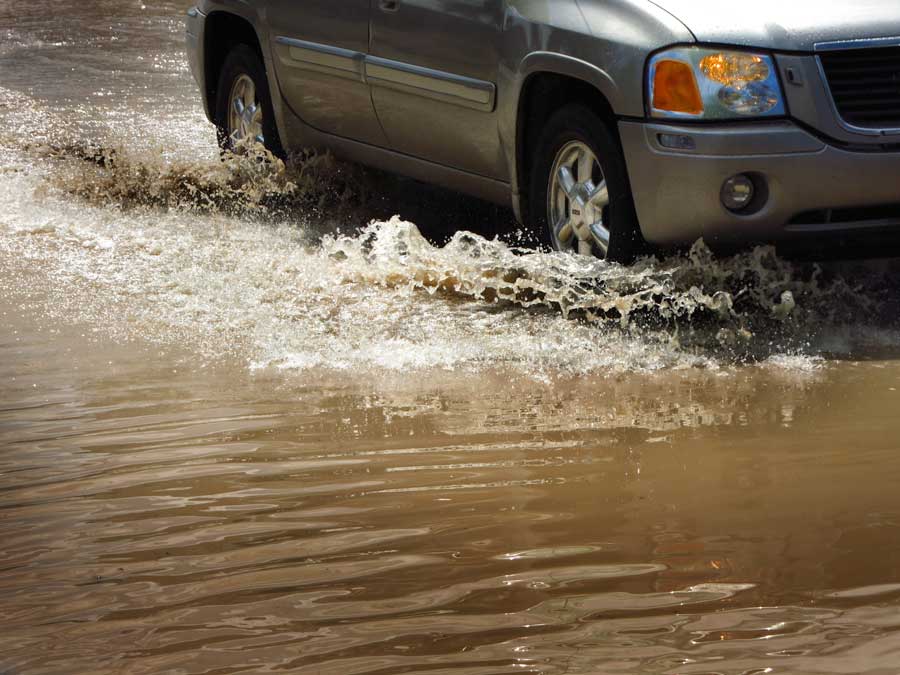Driving Through Flood Water Can Cause Engine Stalling
Flash floods happen frequently around Hampton Roads. And driving through floodwaters can easily cause engine stalling. Driving through wet conditions can be dangerous enough. But in heavy downpours, the outlying water levels can rise and back up into the streets. Standing water is dangerous enough. It can cause hydroplaning as well as greatly reduce visibility. Only drive through standing water if you know that it isn’t too deep. But, what is too deep?
When approaching floodwater in the road, you may think that you can make it through. Especially, if you’re driving a truck or SUV. However, it only takes 6 inches of standing water to cause engine stalling. The first rule of driving through floodwaters is DON’T. It’s always best to reroute. Flash floods occur rapidly and unexpectedly. If your local weather warns you of flood dangers, heed their warnings. If you live in a low lying area, it’s best to evacuate or at the very least move your vehicle to higher ground.
If you do decide to drive amidst a flood warning, never drive through water that you couldn’t walk through. Also consider that there are more than likely deeper waters that are hiding in dips in the road. Those dips could even be hiding the fact that there is no road under the surface at all! Floodwaters can easily wash away the surface of the road and a significant amount of ground underneath. If you do find yourself negotiating a flooded section of the road, drive down the center where the water will be at its shallowest. Also, consider other drivers on the road. Don’t pass through flood water while another vehicle is driving through it.
Always Avoid Fast Moving Flood Water
If the floodwater is moving fast, your vehicle can easily be swept away. Only drive through it if it appears to be 4 inches deep or less even if the water is still. And be sure to drive slowly to avoid creating a bow wave. If you make it through, be sure to check your brakes shortly after passing the standing water. They will not function normally when wet, so you need to prepare yourself for an adequate stopping distance. Light brake applications will help dry them out faster.
The risks to your vehicle are too great to take a chance. A small amount of water getting into the intake will cause engine stalling. If it stalls, don’t try to start it up again. You’ll only cause further damage. On many cars, your air intake is low down on the front of your engine bay. Water can easily get sucked in. And only an egg cupful of water in your combustion chamber can wreck your engine. Some four-wheel drive vehicles have high-level air intakes. This will allow you to drive in standing water that is several feet deep. But don’t take our word for it, check where your air intake is located yourself before attempting to drive through deeper waters. And if it’s raining, avoid popping the hood as well. Your electrical parts will get soaked and make it more difficult to start up again later.
Driving in flood conditions is highly dangerous, and can be hazardous for your vehicle as well. It’s best to remain calm and keep safety in mind. Don’t push the situation. Reroute if you can. Drive slowly, and if you get stuck, don’t push your vehicle either. Put on your hazards and call for help. If your vehicle has experienced flood damage, call us for a tow. We’ll do what we can to save your engine.

